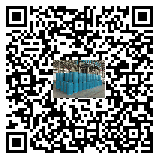Application of Floor Coating Dispersants
Floor coating dispersants achieve uniform dispersion and system stability by reducing the surface tension of
pigments/fillers and forming a stable adsorption layer. Their core role is to enhance dispersibility, prevent
agglomeration, improve coating performance, increase production efficiency, and enhance storage stability.
The following analysis focuses on four dimensions: mechanism of action, application results, usage methods,
and type selection:
I. Mechanism of Action: Dual Mechanisms Ensure Dispersion Stability
Electrostatic Repulsion Effect
Dispersant molecules adsorb on the surface of pigments/fillers, forming a charge layer that repels like-charged
particles and prevents agglomeration. For example, anionic dispersants (such as carboxylates and sulfonates)
ionize in water and adsorb on the particle surface, forming a diffuse double layer and generating a zeta potential.
When particles approach, the electrostatic repulsion caused by the overlap of the double layers prevents coalescence
and maintains the stability of the suspension.
Steric Hindrance Effect
Polymer dispersants (such as polyurethanes and acrylates) form an adsorption layer on the particle surface through
their long-chain molecules, generating entropic repulsion. When particles approach, the overlapping adsorption
layers increase the free energy, forcing the particles to separate. For example, high-molecular-weight dispersants
with high molecular weight can form an adsorption layer several nanometers thick, effectively blocking particle
adsorption and preventing flocculation.
II. Application Effects: Multi-Dimensional Enhancement of Coating Performance
Improving Coating Appearance and Workability
Gloss Improvement: Evenly dispersed pigment particles have a smaller particle size, reducing light scattering
and enhancing coating film gloss. Experiments have shown that the 20° gloss difference between black coil
coatings using different dispersants can reach up to 11.8% (69.7% vs. 81.5%).
Leveling Optimization: Dispersants reduce system viscosity, making the coating easier to spray and brush,
reducing sagging and brush marks, and improving application efficiency.
Color Uniformity: Prevents color floating and blooming, ensuring consistent coating color. Controlled flocculating
dispersants stabilize pigment particles through hydrogen bonding, eliminating floating in the can and on
the coating film.
Enhanced Physical Properties
Hiding Power and Tinting Strength:
Evenly dispersed pigments increase the utilization of active ingredients and enhance hiding power.
For example, optimizing particle size distribution can improve the hiding power of inorganic pigments and
enhance the transparency of organic pigments.
Improved durability:
Dispersants reduce pigment particle aggregation, lowering the risk of coating cracking. They also prevent
UV-induced degradation through steric hindrance, extending product life.
Improved production efficiency and cost control
Shorter grinding time: Dispersants accelerate pigment wetting and dispersion, increasing grinding efficiency by
30%-50%, reducing energy consumption and labor costs.
Increased pigment loading: Reduced viscosity allows for a 10%-20% increase in pigment loading, reducing solvent
usage and optimizing formulation costs.
Enhanced storage stability: Prevents pigment settling and coarsening, extending product shelf life and reducing returns
and waste.
III. Usage: Precise control for optimal results
Timing of addition:
Dispersants should be added during the grinding stage, grinding simultaneously with the pigment to maximize wetting.
Post-addition requires high shear dispersion, but this is less efficient and requires a higher dosage.
Optimized dosage: Inorganic pigments: Recommended dosage is 0.5%-2%, adjusted based on specific surface area.
Difficult-to-disperse pigments (such as carbon black): The addition level can reach 80%-100% of the pigment weight,
but a balance between cost and performance is required.
Surface-treated pigments: The addition level can be reduced by 20%-30% due to improved dispersibility from the treatment.
Experimental Verification: Optimize parameters for single-color grinding through evaluation of gloss, color difference, haze,
and other indicators, and improve efficiency through co-grinding.
Milling Condition Matching:
Adjust the grinding time and dispersant ratio based on the pigment type and particle size. For example, fine-particle pigments
require longer grinding times and increased dispersant dosage to prevent flocculation.
IV. Type Selection: Adapting to Different Floor Coating Systems
Water-Based Coatings
Anionic dispersants, such as carboxylates and sulfonates, offer excellent compatibility and are widely used in latex paints
and water-based floor coatings.
Non-ionic dispersants, such as glycols, reduce surface tension and can be combined with anionic dispersants to improve
wettability.
Polymer dispersants, such as polyurethane dispersants, form a thick adsorption layer to prevent sedimentation and are suitable
for systems with high pigment loadings.
Solvent-Based Coatings
Controlled Flocculation: Such as polycarboxylic acid polymers, stabilize pigments through hydrogen bonding to prevent color
floating and are suitable for oil-based epoxy floor paints.
Cationic: Such as quaternary ammonium salts, effectively disperse carbon black and iron oxide, but should be avoided in
combination with anionic dispersants.
Specific Applications
High-Transparency Coatings: Choose a dispersant that controls pigment particle size distribution to enhance transparency
and color saturation.
Corrosion-Resistant Flooring: Choose a chemically resistant polymer dispersant, such as a polyester, to enhance coating
adhesion and durability.


